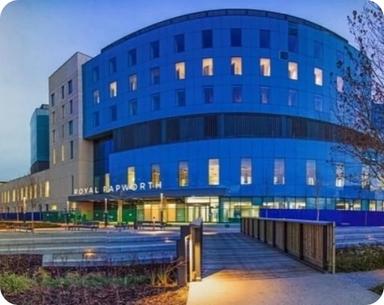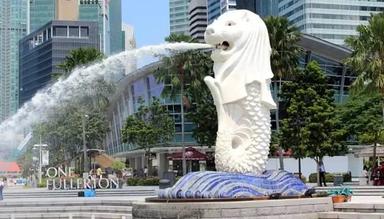
Transforming Lives with Craniotomy
Introduction:
In the realm of medical procedures, few are as intricate and awe-inspiring as the craniotomy. This surgical ballet of the mind involves the delicate art of opening the skull to access the brain. It's a procedure that speaks to the marvels of modern medicine and the indomitable human spirit. In this exploration, we embark on an extraordinary journey into the world of craniotomies, unveiling not only the clinical precision but also the profound emotional and philosophical dimensions that surround this remarkable procedure.
The Craniotomy: An Intricate Ballet
A craniotomy is a surgical procedure that involves removing a section of the skull to access the brain. While the clinical details are both fascinating and intricate, it's essential to understand the broader context in which this procedure takes place.
1. The Anatomy of the Mind:
The brain, often likened to the universe within us, is a complex web of neurons and synapses. It's the epicenter of our thoughts, emotions, and consciousness.
2. The Necessity of Intervention:
Craniotomies are typically performed in response to life-threatening conditions such as brain tumors, blood clots, aneurysms, or traumatic brain injuries. These conditions demand surgical intervention to prevent further damage.
3. A Delicate Dance of Precision:
The procedure itself involves a precise sequence of steps. The surgeon meticulously maps the brain, identifies the affected area, removes the necessary section of the skull, and then accesses and treats the brain condition.
The Emotional Landscape of Craniotomies:
Beyond the clinical details, craniotomies encompass a vast emotional landscape, both for patients and their loved ones.
1. Facing Mortality:
For patients, a craniotomy often confronts them with their mortality. It's a procedure that holds the promise of healing but also the shadow of uncertainty.
2. The Waiting Room Vigil:
·Loved ones, too, endure an emotional rollercoaster in the waiting room. It's a place where hope and fear intermingle, where time slows to a crawl.
3. The Surgeon's Burden:
Surgeons bear the weight of immense responsibility. Their hands hold the power to heal, but they also must navigate the fine line between life and death.
The Philosophy of the Mind and the Self:
The brain is not just an organ; it's the seat of our consciousness, the essence of our being. A craniotomy prompts profound philosophical questions.
1. The Nature of Consciousness:
Craniotomies beckon us to ponder the nature of consciousness. What is it that makes us who we are? Can the essence of self be touched by the surgeon's scalpel?
2. The Resilience of the Human Spirit:
The journey through a craniotomy is a testament to human resilience. It's a story of survival, of the indomitable spirit's will to live and thrive, even in the face of adversity.
3. The Ethical Dilemmas:
·Craniotomies raise ethical questions about the right to life, the boundaries of medical intervention, and the complexities of patient autonomy.
Conclusion:
A craniotomy is far more than a medical procedure; it's a profound exploration of the human condition. It's the delicate ballet of science and art, where the mind meets the hands of the surgeon, and life teeters on the edge of a scalpel. It's an emotional journey that confronts patients, families, and healthcare professionals with the fragility of life and the resilience of the human spirit.
In the realm of the mind, the craniotomy unveils the mysteries of consciousness and the depths of our existence. It's a reminder that, as we explore the wonders of science and medicine, we are also embarking on a philosophical and existential quest. In the end, a craniotomy is not just about healing the body; it's about illuminating the complex interplay of life, consciousness, and the enduring human will to overcome.
5.0
90% Rated Value for Money
Why Choose us?
96%
Success Rate
2+
Craniotomy Surgeons
9+
Craniotomy
3+
Hospitals Around the world
28+
Lives touched
Overview
Introduction:
In the realm of medical procedures, few are as intricate and awe-inspiring as the craniotomy. This surgical ballet of the mind involves the delicate art of opening the skull to access the brain. It's a procedure that speaks to the marvels of modern medicine and the indomitable human spirit. In this exploration, we embark on an extraordinary journey into the world of craniotomies, unveiling not only the clinical precision but also the profound emotional and philosophical dimensions that surround this remarkable procedure.
The Craniotomy: An Intricate Ballet
A craniotomy is a surgical procedure that involves removing a section of the skull to access the brain. While the clinical details are both fascinating and intricate, it's essential to understand the broader context in which this procedure takes place.
1. The Anatomy of the Mind:
The brain, often likened to the universe within us, is a complex web of neurons and synapses. It's the epicenter of our thoughts, emotions, and consciousness.
2. The Necessity of Intervention:
Craniotomies are typically performed in response to life-threatening conditions such as brain tumors, blood clots, aneurysms, or traumatic brain injuries. These conditions demand surgical intervention to prevent further damage.
3. A Delicate Dance of Precision:
The procedure itself involves a precise sequence of steps. The surgeon meticulously maps the brain, identifies the affected area, removes the necessary section of the skull, and then accesses and treats the brain condition.
The Emotional Landscape of Craniotomies:
Beyond the clinical details, craniotomies encompass a vast emotional landscape, both for patients and their loved ones.
1. Facing Mortality:
For patients, a craniotomy often confronts them with their mortality. It's a procedure that holds the promise of healing but also the shadow of uncertainty.
2. The Waiting Room Vigil:
·Loved ones, too, endure an emotional rollercoaster in the waiting room. It's a place where hope and fear intermingle, where time slows to a crawl.
3. The Surgeon's Burden:
Surgeons bear the weight of immense responsibility. Their hands hold the power to heal, but they also must navigate the fine line between life and death.
The Philosophy of the Mind and the Self:
The brain is not just an organ; it's the seat of our consciousness, the essence of our being. A craniotomy prompts profound philosophical questions.
1. The Nature of Consciousness:
Craniotomies beckon us to ponder the nature of consciousness. What is it that makes us who we are? Can the essence of self be touched by the surgeon's scalpel?
2. The Resilience of the Human Spirit:
The journey through a craniotomy is a testament to human resilience. It's a story of survival, of the indomitable spirit's will to live and thrive, even in the face of adversity.
3. The Ethical Dilemmas:
·Craniotomies raise ethical questions about the right to life, the boundaries of medical intervention, and the complexities of patient autonomy.
Conclusion:
A craniotomy is far more than a medical procedure; it's a profound exploration of the human condition. It's the delicate ballet of science and art, where the mind meets the hands of the surgeon, and life teeters on the edge of a scalpel. It's an emotional journey that confronts patients, families, and healthcare professionals with the fragility of life and the resilience of the human spirit.
In the realm of the mind, the craniotomy unveils the mysteries of consciousness and the depths of our existence. It's a reminder that, as we explore the wonders of science and medicine, we are also embarking on a philosophical and existential quest. In the end, a craniotomy is not just about healing the body; it's about illuminating the complex interplay of life, consciousness, and the enduring human will to overcome.
FAQs
Packages starting from
Need help in choosing the right package for your medical trip?
Your Health data is protected with us




















